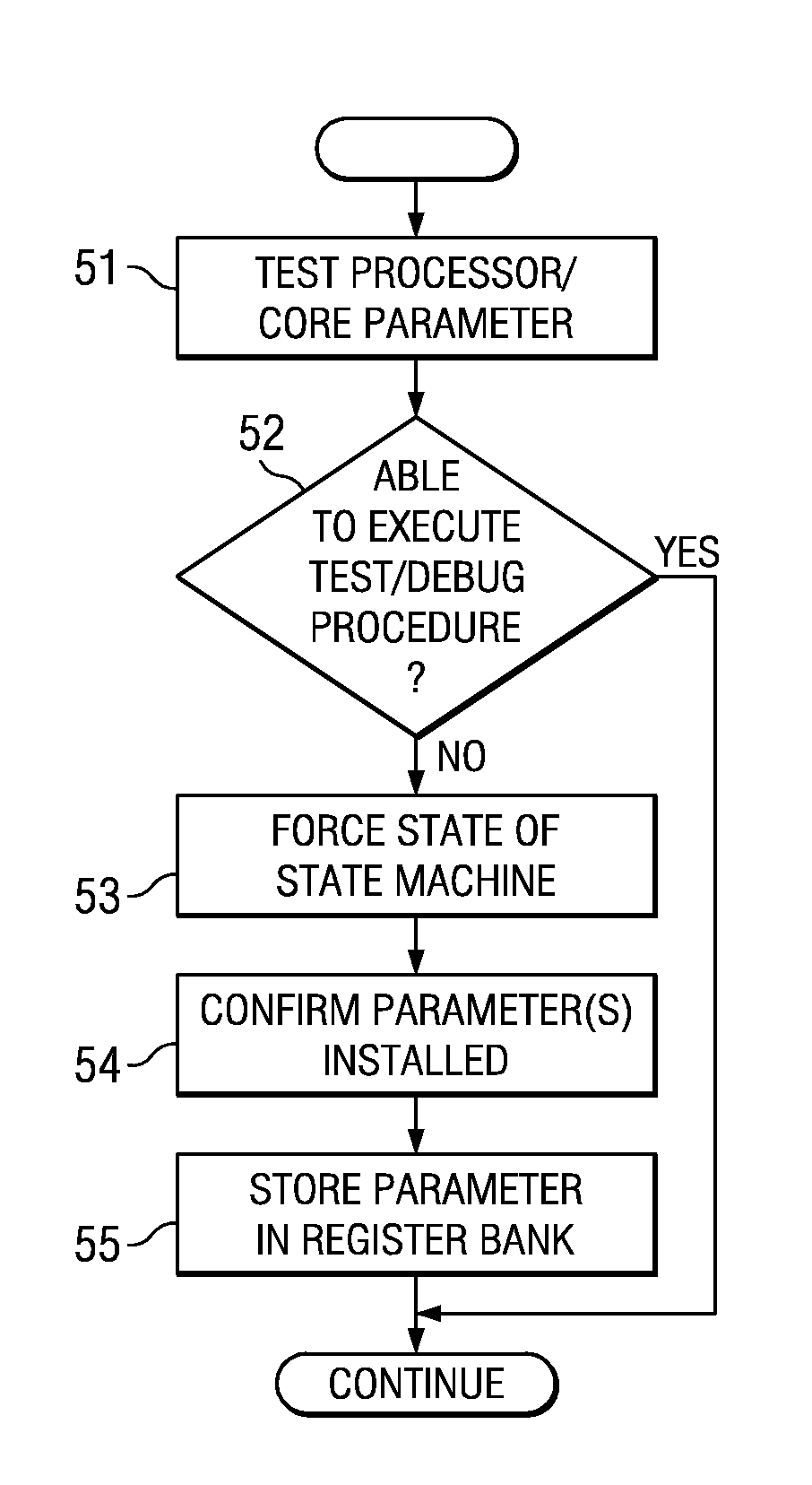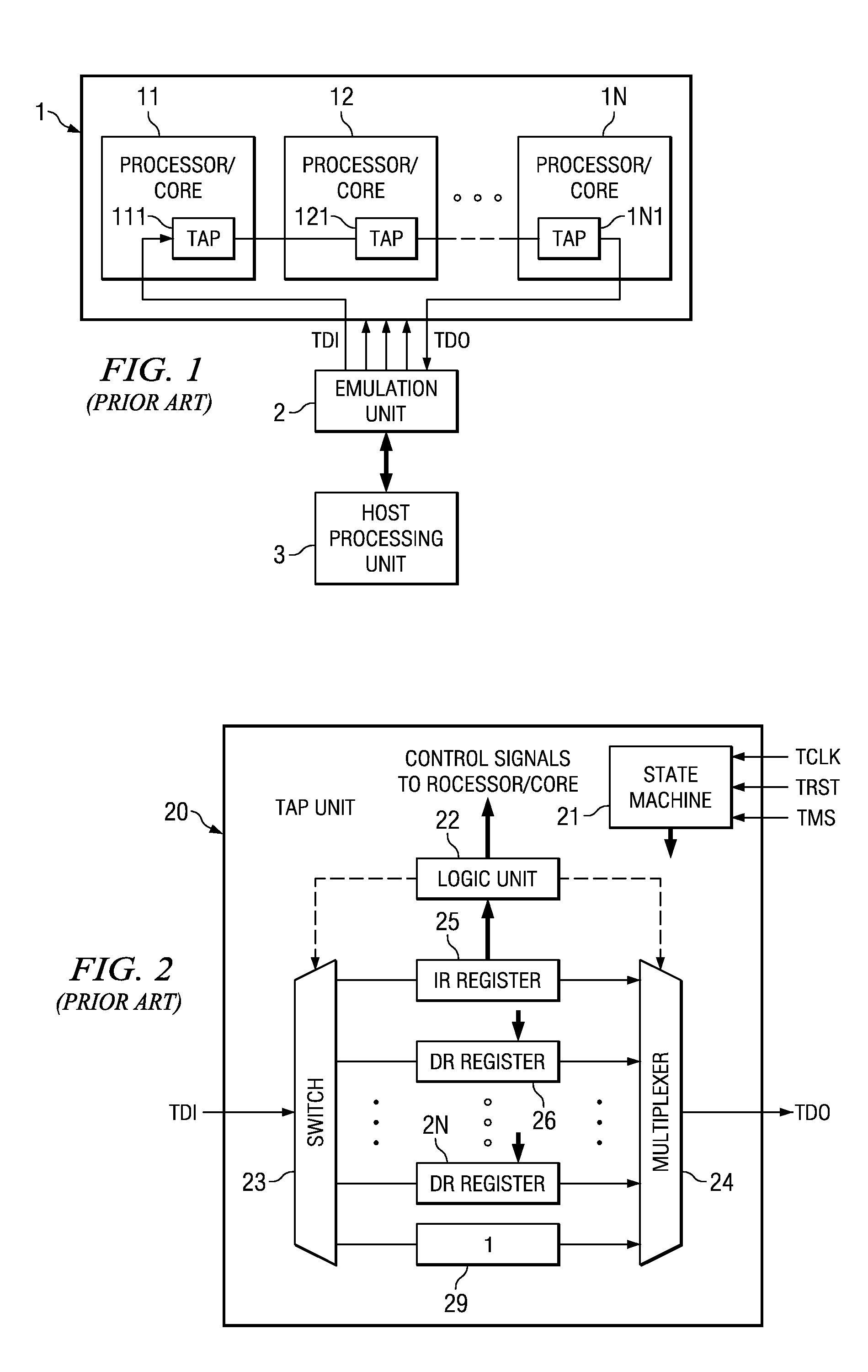Apparatus and method for test and debug of a processor/core having advanced power management
a technology of advanced power management and apparatus, applied in the field of apparatus and methods for testing and debugging of processors/cores with advanced power management, can solve the problems of requiring its own tms control signal, parallel solution also does not facilitate co-emulation, and the solution of multiple taps is not conveniently scalabl
- Summary
- Abstract
- Description
- Claims
- Application Information
AI Technical Summary
Benefits of technology
Problems solved by technology
Method used
Image
Examples
Embodiment Construction
1. Detailed Description of the Figures
[0030]Referring to FIG. 3, a block diagram of the interface unit 30 mitigating the transfer of data between the plurality of processor / cores 11-1N and the test and debug apparatus is shown. The portion of the current invention that differs from FIG. 1 is designated by numbers beginning with the number three. Coupled to the TAP units 111-11N of each processor / core are switch units 331-33N, respectively. The interface unit 30 includes a TAP unit 301. The TAP unit 301 of the interface unit 30 is coupled to switch unit 39. The switch units 39 and 331-33N are coupled in series. The TDI signal from the test and debug unit, i.e., the emulation unit 2 and the host processing unit 3 of FIG. 1 and FIG. 3, is applied to an input terminal of switch unit 39. The output terminal of switch unit 39 is applied to the input terminal of switch unit 331. The input terminal of each switch unit, except for switch unit 39, is coupled to the output terminal of the prev...
PUM
 Login to View More
Login to View More Abstract
Description
Claims
Application Information
 Login to View More
Login to View More - R&D
- Intellectual Property
- Life Sciences
- Materials
- Tech Scout
- Unparalleled Data Quality
- Higher Quality Content
- 60% Fewer Hallucinations
Browse by: Latest US Patents, China's latest patents, Technical Efficacy Thesaurus, Application Domain, Technology Topic, Popular Technical Reports.
© 2025 PatSnap. All rights reserved.Legal|Privacy policy|Modern Slavery Act Transparency Statement|Sitemap|About US| Contact US: help@patsnap.com



